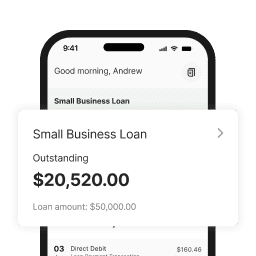At a glance
- A quarterly business review helps business owners stay on track, identify areas for improvement, and make adjustments that drive success in the next quarter.
- Evaluate your financial health by reviewing revenue, expenses, and profit margins, and take steps to optimise cash flow.
- Set clear goals for the next quarter by tracking key finance metrics, refining your strategy, and making necessary adjustments in marketing, sales, and operations.
The last quarter is in the books. Now is the time to step back, review your business performance, and make the right adjustments to stay on track for the months ahead. A quarterly business review goes beyond the numbers — it helps you see what’s working, what’s not, and where to focus next.
This guide walks you through a practical quarterly business review, which is a pillar of small business financial planning. It will help you take a health check of your business finances, keep track of your cash flow, and refine your strategy for the upcoming months.
To make things easier, we’ve included a quarterly business review template you can download at the end of this article.
1Financial health check
Before planning for the next quarter, you need a clear picture of where your business stands financially. This starts with reviewing revenue, expenses, and profit margins to see if you’re on track with your goals.
Key questions to ask:
- Revenue: How much did your business bring in this quarter? Are sales trending up, steady, or declining?
- Expenses: Where is your money going? Are there unnecessary costs you can cut or optimise?
- Profit margins: Are you making enough on each sale after expenses? Are your pricing and cost structures sustainable?
Action step: Compare these numbers to the previous quarter (if available) to spot trends.
If revenue is declining or stagnant, investigate which products/services aren’t performing and consider focusing on your best-sellers or those with higher margins. Look at variable expenses such as shipping or advertising. Could you negotiate better deals with suppliers or reduce ad spend on underperforming channels?
If your margins are thin, consider adjusting pricing. For example, if your margins are low on a particular product, can you increase its price by 5–10% without losing customers, or bundle it with other products?
2Cash flow management
Even if your business is profitable, managing cash flow strategically will help you avoid major challenges. A strong cash position ensures you can cover expenses, invest in growth, and handle unexpected costs.
Key questions to ask:
- Outstanding invoices: Are clients or customers late on payments?
- Upcoming expenses: Do you have a plan for major costs in the next three months?
- Emergency funds: If revenue dropped unexpectedly, could your business sustain itself?
Action step: Pinpoint areas in your cash flow that need improvement.
Follow up on overdue invoices by implementing a process with automated reminders using accounting software like Xero or QuickBooks. You can also offer an incentive for early payments, such as a 2% discount if invoices are paid within 10 days.
Plan for any large upcoming expenses like equipment upgrades or seasonal inventory purchases. If you expect significant costs, set aside funds now or explore financing options if necessary. Review your reserves — do you have 3-6 months of operational costs in a savings account to manage during lean months?
If cash flow is tight, review variable costs or look at short-term financing options, such as Prospa Small Business Loan — fast access to up to $500K to keep your business moving — or Prospa Line of Credit, which gives you ongoing access to flexible funding to simplify your cash flow.
3Key financial metrics quarterly review
A successful quarterly review focuses on the bigger picture. It’s about assessing the health of your business, using key financial metrics to measure the effectiveness of your current strategies.
Key financial metrics to include in your quarterly review:
- Customer acquisition and retention: Are you gaining new customers while keeping existing ones engaged?
- Marketing performance: Are your campaigns generating leads or sales?
- Operational efficiency: Are there bottlenecks slowing down productivity?
Action step: Identify one or two key areas that need the most improvement.
If customer retention is low, look at your follow-up processes, loyalty programs, or post-sale engagement. For example, you could implement email follow-ups, offer a loyalty program, or send personalised offers to encourage repeat business.
Evaluate which marketing channels brought in the most leads. For example, if Facebook ads generated better results than Instagram, focus more on Facebook for upcoming campaigns. If you’re looking to refine your social media strategy, check out our guide on how to create a simple social media strategy in just 60 minutes.
Track time spent on tasks and productivity. If order fulfilment is taking longer than expected, consider automation tools or outsourcing options to streamline the process.
4Planning for the next quarter
Once you’ve reviewed your business performance, it’s time to make adjustments for the next quarter. The key here is focus: what changes will make the biggest impact?
Steps to refine your strategy:
- Set 2–3 clear goals: Focus on the most critical areas (e.g., increasing revenue by 10%, reducing overdue invoices, or improving conversion rates).
- Refine marketing and sales efforts: If campaigns underperformed, tweak messaging, explore new channels, or double down on what worked.
- Adjust pricing or expenses if needed: If profit margins were low, consider pricing adjustments or cost-cutting strategies.
Action step:
Focus on 2–3 key goals for the upcoming quarter and break them down into smaller, weekly steps to keep momentum going:
- Revenue goal: If your goal is to increase revenue by 10%, break that down into how many new customers or sales you need each month.
- Marketing goal: If your campaigns didn’t perform as expected, try segmenting your email list for more targeted offers, or explore paid ads on new platforms to diversify your reach.
- Profit margins goal: If margins are low, focus on bundling products or raising prices where possible, and look at operational expenses you can cut or renegotiate.
Download your free quarterly business review template
A quarterly business review is a chance to check in on your financial health, cash flow, and business strategy so you can course-correct early and set up the next quarter for success.
We’ve developed a free quarterly business review template for small businesses to allow you to complete your review in just one hour.
Download it now and get started today.
Want the next quarter to be your best one yet? Talk to a Prospa specialist today.








